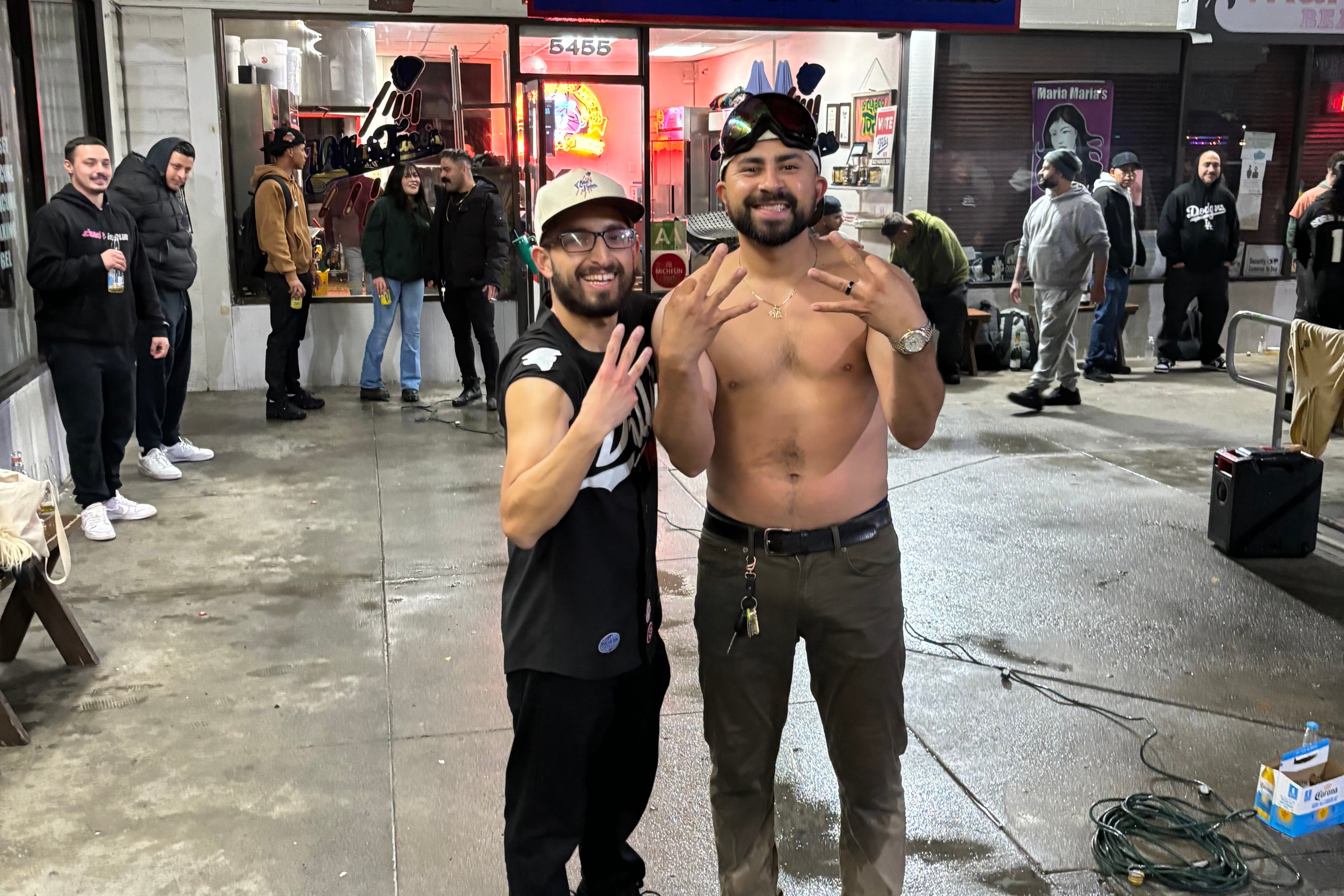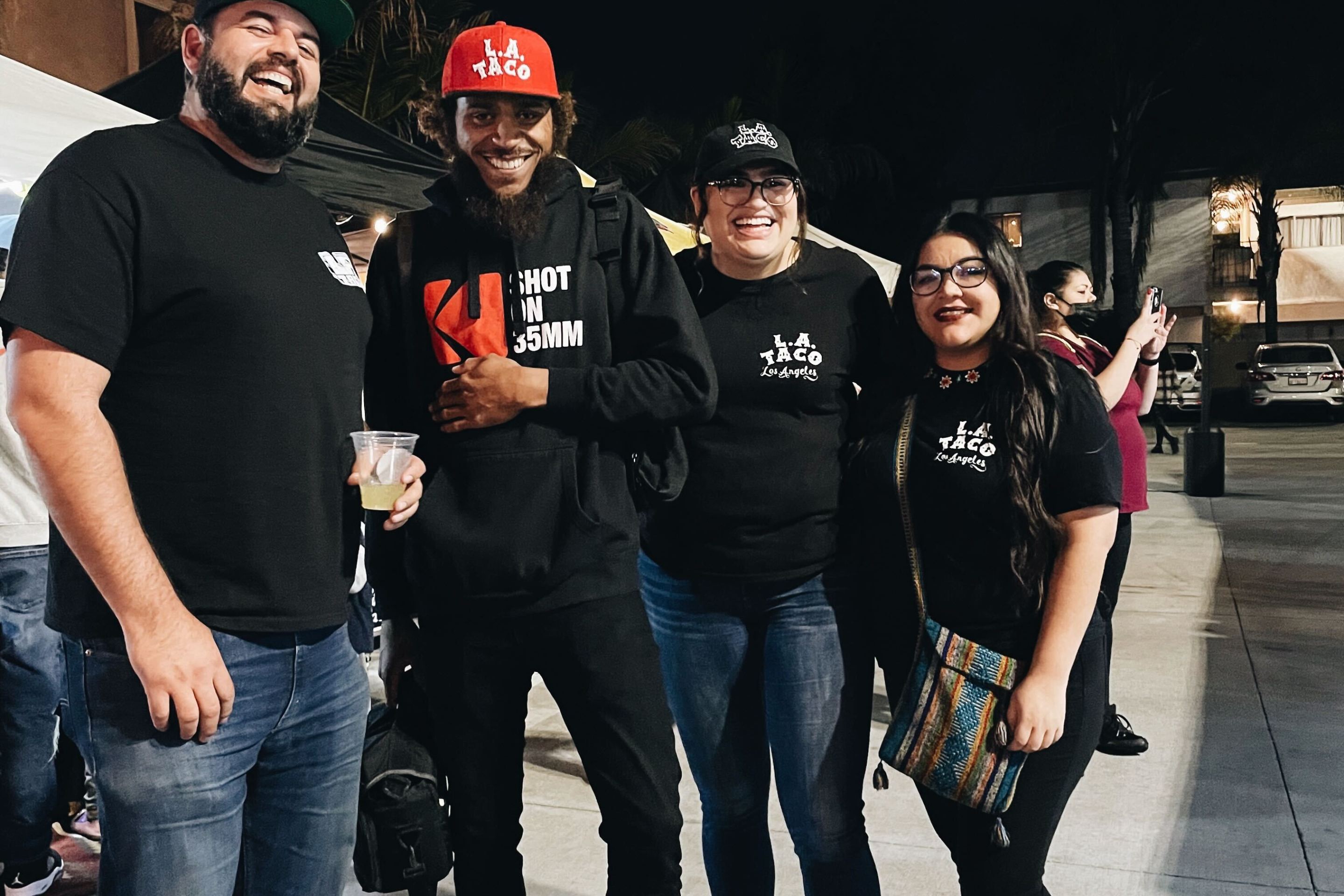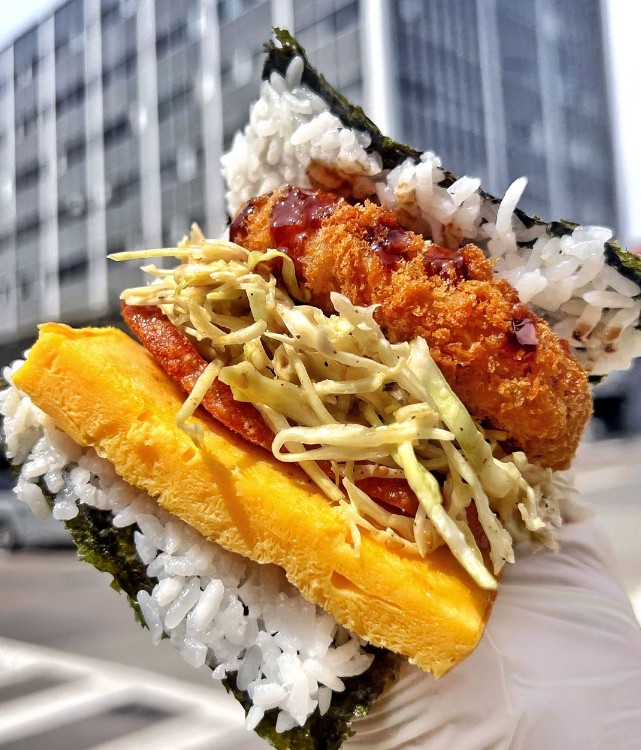The Story of El Taurino and L.A.’s First CDMX-Style ‘Two-Bite’ Tortilla That Changed the City’s Taco Life Forever
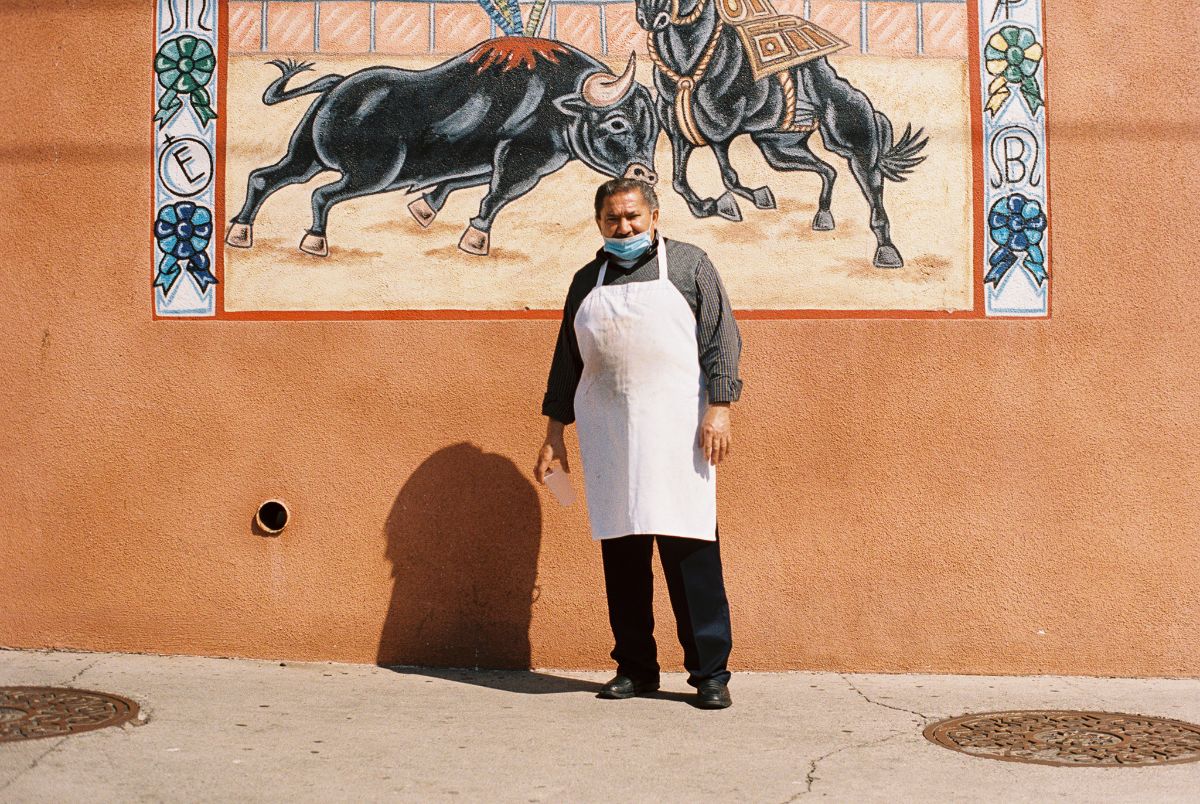
Don Adolfo El Taurino
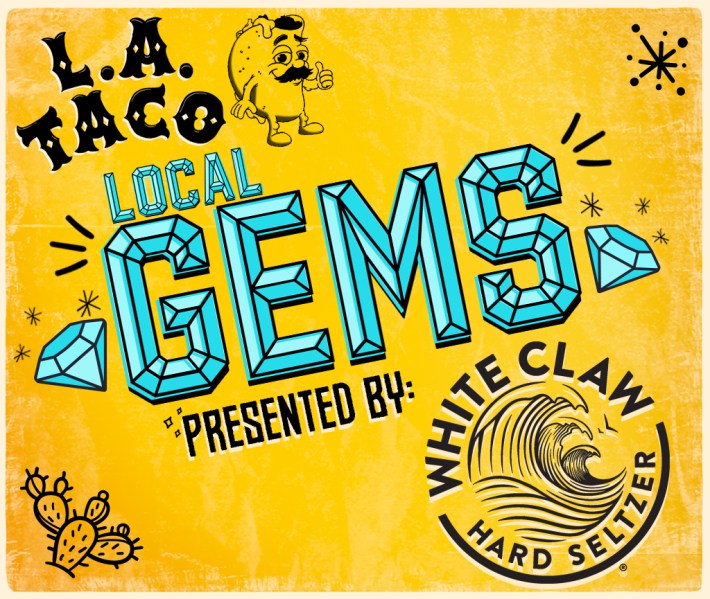
Welcome to Local Gems, our new monthly restaurant column presented by White Claw, the official hard seltzer of L.A. TACO. Each month we’ll honor institutions that make delicious food and have stood the test of time all over Los Angeles and beyond. Read, order, share, and don’t be afraid to rep your community’s local gem in the comments.
Adolfo Martinez has been in the taco business since 1972.
That year, his older brother, the late Raul Martinez, brought a corn tortilla from Mexico City that would change Los Angeles forever: the two-bite, four-and-a-half-inch, taquería-sized corn tortilla.
“It was a different time back then. The tacos were big, and you could only get carne asada. It was super easy then [to cross the border]. You could even get across dancing!” Don Adolfo tells L.A. TACO.
According to Don Adolfo, everyone was eating the larger-sized everyday table tortillas in Los Angeles at the time. They had to bring a specialty die-cut for their tortillero to make tortillas in this particular size. “Without my brother, there would be no small tortilla. He was a pioneer,” Don Adolfo states. He was 19 at the time, and his older brother was setting up what would soon be L.A.’s iconic taco chain, King Taco, outside of a nightclub in East L.A.
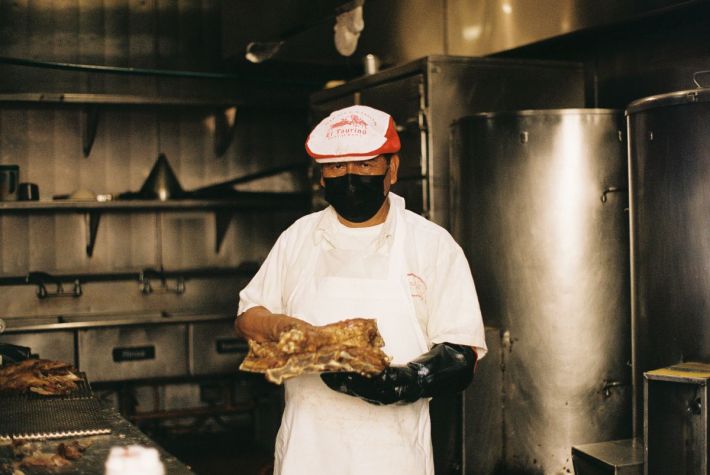
In 1974, Raul let him take over his taco truck off the intersection of Olympic and Hoover, aptly named Adolfo’s Place. “Who the devil is Adolfo? I didn’t like the name, so I wanted to change it,” he said before arriving at El Taurino. “Back in Mexico City, when I had a little money, I would take my girlfriend to a nice little restaurant called El Taurino. That name always stuck with me.” This origin story particularly resonated with me as I grew up on El Taurino, and I would also take my first love there when I was a teen and had a little bit of money. It was nice to know that Don Adolfo is a keen businessman and a romantico at heart.
El Taurino is a pillar in the particular area of Pico-Union that blends right into Koreatown.
El Taurino is a pillar in the particular area of Pico-Union that blends right into Koreatown. My hard and fast rule, growing up in Koreatown, is that if you can see any Korean letters, then you’re in K-Town. But according to Don Adolfo, the business is part of Pico-Union, as that was the name of the neighborhood the business was established in even before Koreatown came to be.
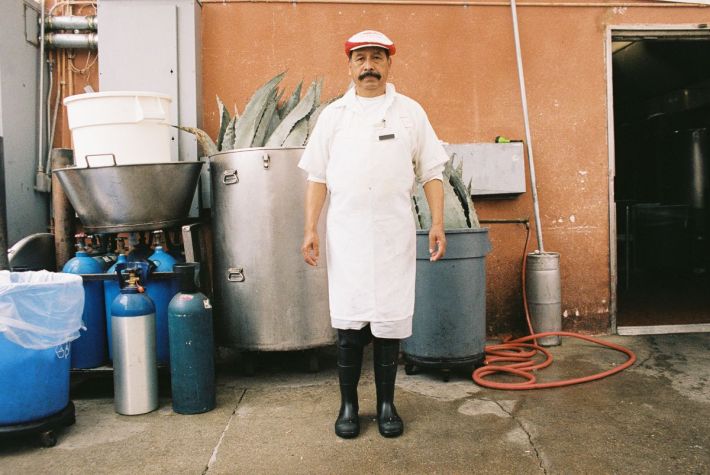
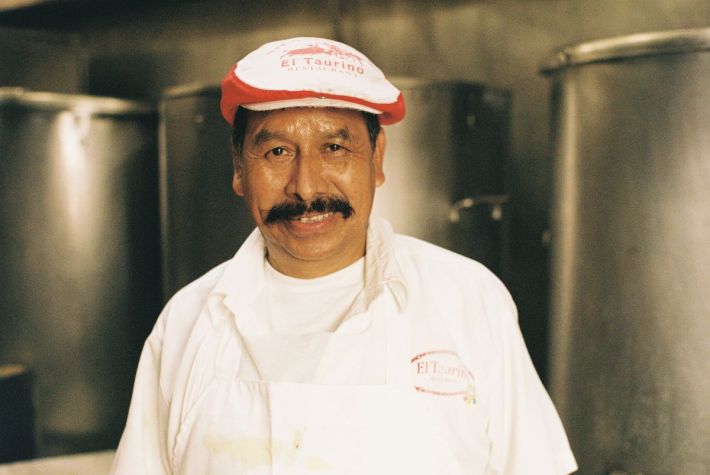
“A Korean gentleman would come in now and then and offer me a suitcase full of money in exchange for my business,” Don Adolfo said to me about his multi-decade success. When asked, “Why didn’t you consider selling then? Don Adolfo tells L.A. TACO, “How can you sell something you love?.” This sentiment reflects well within how El Taurino approaches every aspect of their craft and business.
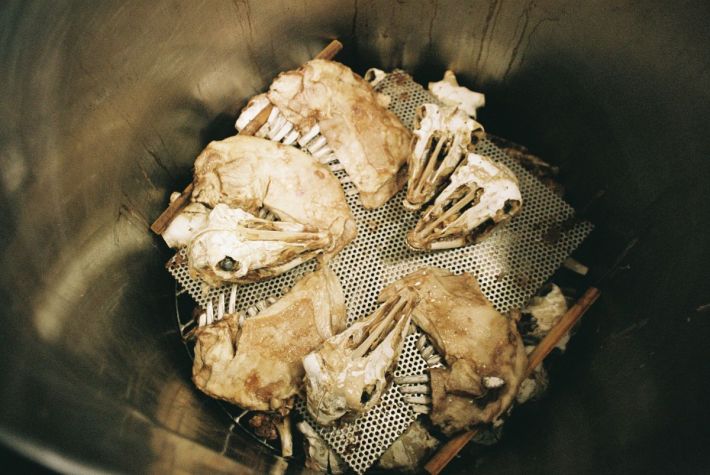
Don Moises Aracen is the current head taquero at El Taurino. He’s worked at the restaurant for 28 years—25 years dedicated to being the head taquero. On a Tuesday afternoon, Don Moises lovingly and respectfully prepares the lamb used to make their tender Texcoco-style barbacoa. He gently prepares the costillas (ribs), cabeza (head) de borrego, and espinazo (spines) every Tuesday through Thursday for the weekend rush. They go through over a ton of fresh lamb meat every week, according to Don Adolfo. “We offer these nice cuts to the community at a great value. It’s not so common here as it is back in Mexico, which is what we’re used to and want to bring to our customers here,” Don Adolfo says.
“The years I’ve spent here tell you that we’re dedicated to quality,” says Don Moises, originally from Oaxaca. They spend a whole day just cleaning the meat for barbacoa. The second day is dedicated to taking dried maguey leaves to line the different layers of meat that they will stack and cook for six hours before roasting them in an oven for a couple of hours more. The end product is what families dedicate an entire weekend to eating and enjoying it.
“My brother was a great man. He could do anything. In his lifetime, he learned to do everything. There was never any bad blood between us; he was a great brother to me...”
My step-dad would take us there on the weekends to partake in slow-cooked tender ribs covered in sauteed onions, a side of charro beans, salsa borracha, and a giant pitcher of ice-cold Mexican beer on tap.
Another thing that was not so common is that he would sell the mythical Indigenous drink of pulque at El Taurino until there was a dip in quality from a supplier. “I took it off [the menu], I told him he was baptizing it a little too much,” he tells me. When asked to clarify, he tells me that baptizing, or bautizar, is the process of watering down pulque, which he frowns upon. Quality is everything to Don Adolfo.
The King Taco-El Taurino Connection
The neighborhood has long gossiped about beef—no pun intended—between El Taurino and the famous King Taco. The late Raul Martinez was the eldest sibling out of nine total, five sisters and four brothers, Don Adolfo included. “My brother was a great man. He could do anything. In his lifetime, he learned to do everything. There was never any bad blood between us; he was a great brother to me,” Don Adolfo tells L.A. TACO over a lunchtime interview. He puts that rumor to rest, saying that his brother helped build his business as a way to help him make his way here in the United States. Don Adolfo hasn’t franchised El Taurino, but he does run El Rincon Taurino, alongside another one of his brothers who have locations in Panorama City and La Puente.
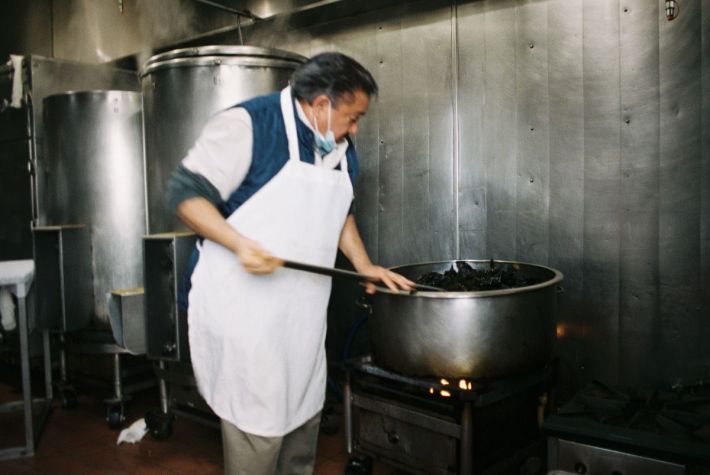
El Taurino has become infamous for the perceived stinginess with its pioneering and addictive green and red salsas. Back in the day, customers would get a side of lime, radishes, and grilled spring onions with their orders. “There was so much waste at the end of every shift. Buckets of radishes, limes, and onions would all go to the trash, unfortunately,” Don Adolfo tells L.A. TACO when asked why they don’t offer up all the fixings anymore.
“I love El Taurino...They have to set up their service better. But if they don’t, I’m still going to come back.”
Don Adolfo says that customers were too wasteful, and the costs for produce were rising. He decided to cut out the fixings and focus on the staples. Customers, on the other hand, were not happy when this change happened in the 1980s. This persists to this day, with customers always wanting and asking for more. Specifically, they wanted more salsa. Speaking to a few customers that day paints a clear picture of this dynamic.
Jennifer, who preferred not to share her last name, was ordering tostadas de asada with two other friends, Chris and Luis, who have been customers for several years. “I love the food; hate the service,” Luis says. “I don't like the service, especially when it's packed. When you want an extra sauce, they get mad and charge you double.”
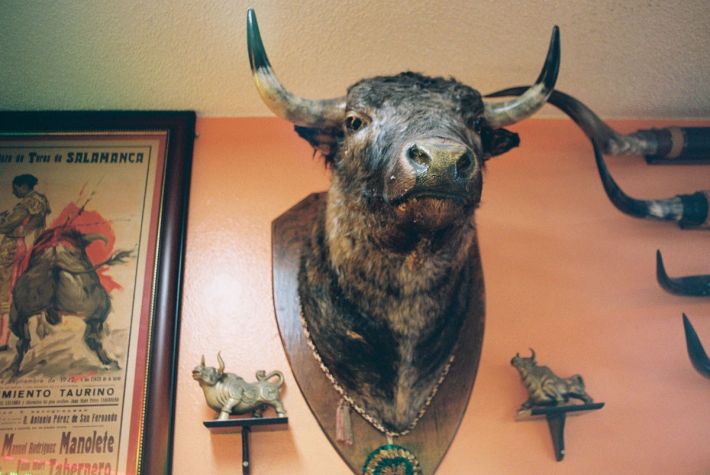
“But you’re still gonna eat here, though, right?” interjects Chris. “Every real place is like that. The authentic places with authentic food, with no bs,” Luis finishes. Jennifer thinks for a moment and then adds, “I love El Taurino...They have to set up their service better. But if they don’t, I’m still going to come back.”
Speaking to Joan L., who has been a customer for 20 years, she says, “Koreans love coming here because we love spicy food, but the red one [is] too spicy for me. I like the green one.”
For the past three years, Roberto Campos has been coming here, originally from San Miguel, El Salvador, and had no qualms with the service or the amount of sauce they give you. Speaking to L.A. TACO in Spanish, he offered, “[They’re] very nice, everything’s good. They always treat me well and give me plenty of salsa.”
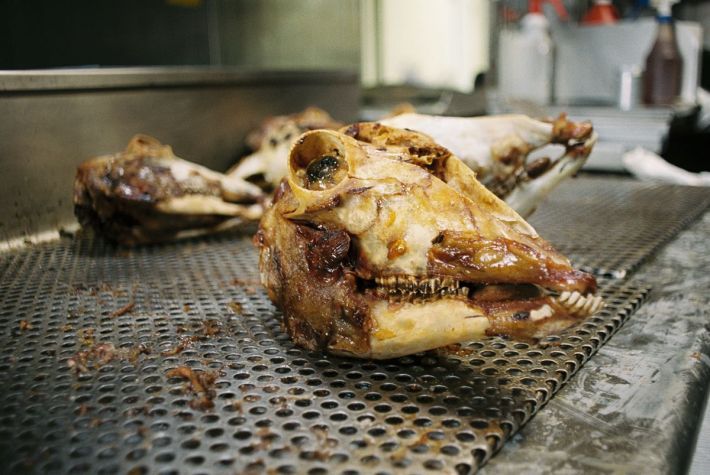
These micro tensions between getting enough or not enough salsa adds to the lore of El Taurino. With its bullfighting-themed interior decor, a slogan reads, “a very nice place to eat,” and its dedication to providing quality meats over 40 years, El Taurino is a testament to Don Adolfo’s dedication to offering dishes he would see in his native Mexico City.
Ostensibly, the business has been affected during the pandemic. Don Adolfo says that people simply don’t order as much of their barbacoa, costillas, or other staples because a big draw is for the customers to eat things fresh as they are prepared inside the restaurant. As the afternoon dipped into the evening, they still have a dedicated following as droves of customers waiting patiently outside in designated tents for their food.
El Taurino is a community gem, uniting together Koreans, Central Americans, and Mexicans to eat tacos de asada, al pastor, tripas, buche, lengua, costillas, barbacoa—all of these communities share the love for tender meat and savory salsas.
And if you are a level 99 Taco Life enthusiast, ask for a whole cabeza de borrego (barbacoa lamb head), which renders out about two pounds of luscious meat for a very reasonable $12.
[dropcap size=big]B[/dropcap]ienvenidos a Los Favoritos, nuestra nueva columna de presentada por White Claw, el hard seltzer oficial de L.A. TACO. Cada mes honraremos instituciones que hacen alimentos deliciosos y han pasado la prueba del tiempo en todo Los Ángeles y más allá! Lean, ordenen, compartan, y no teman representar su restaurante favorito de su barrio en los comentarios.
Adolfo Martinez ha estado en el negocio de los tacos desde 1972.
Ese año, su hermano Raul Martinez se trajo una tortilla de maíz hecha en Ciudad México que cambiaría Los Ángeles para siempre: era de dos mordidas, y cuatro pulgadas y media, una tortilla de taquería.
“Eran tiempos muy diferentes en ese entonces. Los tacos eran grandes, y solo había de carne asada. También era muy fácil cruzar la frontera, ¡Hasta bailando se cruzaba!” comenta Don Adolfo a L.A. TACO.
Según Don Adolfo, en esos tiempos todo mundo comía tortillas de tamaño regular. Necesitaron traer un molde especial para que su tortillero pudiese hacer tortillas para tacos de tamaño tan particular. “Sin mi hermano, no tendríamos tortillas taqueras. Él fue un pionero.” dice Don Adolfo, quien tenía 19 años mientras su hermano construía una cadena de taquerías, King Taco, que pronto llegaría a ser emblemática de Los Ángeles.
En 1974, Raul le dejó su lonchera de tacos sobre la intersección de Olympic y Hoover, llamada Adolfo's Place. “¿Quién diablos es Adolfo? No me gustaba el nombre, así es de que se lo cambié.” es cómo Don Adolfo llegó a escoger el nombre de El Taurino. “En la ciudad de México, cuando no tenía mucho dinero, llevaba a mi novia a un restaurante pequeño llamado El Taurino. El nombre nunca se me olvido.” Esta historia de origen en particular resonó conmigo siendo que yo crecí comiendo El Taurino, y es donde llevé a mi primer amor de adolecente cuando no tenía mucho dinero. Es agradable saber que Don Adolfo tiene un buen ojo para el negocio aparte de ser romántico.
El Taurino es un pilar de la área de Pico-Union, la cual se ubica a los bordes de Koreatown. Yo siempre me he basado en la escritura de los letreros en Koreatown, si tienen letras Coreanas, estas en Koreatown. Pero dice Don Adolfo que su negocio es parte de Pico-Union, siendo que ese era el nombre del barrio cuando se estableció el negocio, antes aún de la creación de Koreatown.
“De vez en cuando un señor Coreano venía a ofrecerme una maleta llena de dinero por mi negocio,” dice Don Adolfo hablando de su éxito durante varias décadas. Cuando le pregunté, “Porque no consideró venderlo?” Don Adolfo nos dijo a LA TACO, “¿Cómo puedes vender algo que amas?” Este es el sentimiento reflejado en cómo El Taurino se dedica en cada aspecto de su oficio y negocio.
Don Moisés Atrasen es actualmente el taquero principal en El Taurino. El ha trabajado en el restaurante por 28 años—25 de los cuales han sido dedicados a ser el taquero principal. Un Martes durante el atardecer, Don Moisés preparó un borrego de manera muy atenta y respetuosa usando la carne para hacer una barbacoa tierna estilo Texcoco. Prepara las costillas, cabeza de borrego, y espinazo expertamente de Martes a Jueves en preparación del fin de semana. Se consume más de una tonelada de borrego cada semana, dice Don Adolfo. “Ofrecemos estos cortes exquisitos a la comunidad por un buen precio. No es tan común aquí cómo en México, y así es cómo estamos acostumbrados y lo que queremos ofrecer a nuestra clientela.” dice Don Adolfo.
“Los años que he pasado aquí demuestran que estamos dedicados a la calidad.” dice Don Moisés, originario de Oaxaca. Pasan todo un día limpiando y preparando la carne de borrego para la barbacoa. El segundo día es dedicado a manipular las pencas de maguey y forrando bandejas en las cuales enciman la carne antes de cocerla seis horas, después asando la carne hasta su punto. El producto final es a lo que familias dedican todo un fin de semana para comer y disfrutar.
Mi padrastro nos llevaba los fines de semana a tomar parte de la delicia, comíamos costillas encebolladas, frijoles charros, salsa borracha, y una jarra bien fría de cerveza Mexicana.
Otra cosa que no era tan común es que vendía la bebida mítica indigena conocida cómo pulque en El Taurino hasta que bajó en calidad por causa del proveedor. “Tuve que quitarlo del menú, le dije que lo estaba bautizando mucho.” Cuando le pedí clarificación, me explicó que bautizar se le dice cuando diluyen el pulque con agua, algo que a él no le gusta. La calidad es lo más importante para Don Adolfo.
La Conexión King Taco-El Taurino
El barrio siempre ha susurrado y chismeado sobre algún pleito entre El Taurino y el famoso King Taco. El difunto Raul Martinez fue el mayor de nueve, cinco hermanas y cuatro hermanos. Don Adolfo incluye. “Mi hermano fue un gran hombre. Podía hacer lo que le daba la gana. En su vida, aprendió de todo. Nunca hubo resentimiento entre nosotros; fue un buen hermano conmigo.” dice Don Adolfo a L.A. TACO durante una entrevista en su hora de comida. Puso el rumor a descansar diciendo que su hermano le ayudó construir su negocio como manera de establecerlo aquí en los Estados Unidos. Don Adolfo no ha franquiciado El Taurino, pero sí opera El Rincón Taurino junto otro de sus hermanos quien tienen ubicaciones en Panorama City y La Puente.
El Taurino se ha vuelto infame por su tacañería con respeto a sus salsas verdes y rojas, adictivas igual que pioneras. En sus primeros días se les daba al cliente limón, rábanos, y cebollitas asadas con cada orden. “Había tanto desperdicio al final de cada turno. Tirábamos baldes de rábanos, limones, y cebollas a la basura, desafortunadamente.” dice Don Adolfo a L.A. TACO cuando le preguntamos por qué ya no se ofrecen las guarniciones.
Don Adolfo dice que la clientela de esos tiempos desperdiciaba mucho, y los precios seguían subiendo. Fue por eso que decidió no ofrecer las verduras adicionales y enfocarse en los artículos básicos de su menú. Por otra parte, la clientela no estaba contenta con su decisión cuando se implementó en los 1980s. Esto ha persistido hasta el día de hoy, y los clientes siguen pidiendo y queriendo más salsa. Hablando con algunos de los clientes en el restaurant delinea está dynamica claramente.
Jennifer, quien prefirió no dar apellido, ordenó tostadas de carne asada con dos de sus amistades, Chris y Luis, quienes han sido clientes por varios años. “Me encanta la comida; odio el servicio,” dice Luis. “No me gusta el servicio, especialmente si están muy ocupados. Cuando quieres más salsa, se enojan y te cobran doble.”
“¿Pero igual comes aquí, verdad?” interviene Chris, “Todos los lugares son así. Los lugares auténticos, con comida auténtica, sin tonterías.” Luis termina. Jennifer piensa por un momento y agrega, “Yo amo El Taurino...pero es verdad que necesitan mejorar su servicio. Y aunque no lo hagan, de todos modos regreso.”
Hablando con Joan L., quien ha sido cliente durante 20 años dice, “A los Coreanos nos gusta porque amamos la comida picante, pero esa salsa roja es demasiada picante para mi. Prefiero la verde.”
En los últimos tres años, Roberto Campos ha llegado a El Taurino, originario de San Miguel, El Salvador sin problema alguno con el servicio o el número de salsa que le dan. Hablando con L.A. TACO en español dijo, “Son bien amables, todo bien bueno. Siempre me tratan bien y me dan bastante salsa.”
Son estas micro-tensiones de recibir suficiente salsa o no que se suman a la tradición de El Taurino. Con su temática de toros en el interior del restaurant, un eslogan que lee “un buen lugar para comer,” y la dedicación a proveer carnes de calidad durante más de 40 años, El Taurino es testamento a la dedicación de Don Adolfo a ofrecer los platillos típicos de su México natal.
Aparentemente, el negocio ha sido afectado durante la pandemia. Don Adolfo dice que la gente no ordena tanta barbacoa, costilla, y comida tradicional porque parte de la experiencia es disfrutar las comidas recién hechas dentro del restaurante. Entre más atardecía el día, y la tarde se convertía en noche, todavía había bastante gente esperando sus órdenes pacientemente afuera del restaurante debajo de carpas designadas.
El Taurino es una joya de la comunidad, uniendo a Coreanos, Centroamericanos, y Mexicanos a través de comiendo tacos de asada, al pastor, tripas, buche, lengua, costillas, y barbacoa—las cuales todas estas comunidades comparten en un amor por la carne tierna y salsas sabrosas.
Si eres entusiasta nivel 99 de Taco Life, pideles una cabeza de borrego entera que rinde aproximadamente dos libras de carne deliciosa por tan solo $12.
Translated by Alex Bravo for L.A. TACO.
Vladimir De Jesus Santos is a Salvadoran-American “rocker foo” from Koreatown, Los Angeles, CA. He’s worked as a Cinematographer/Editor for the past decade focusing on documentary, short horror films, low budget music videos and in 2019 he started his own podcast “Ey, Foo You A Rocker?” which discusses the intersection between race and identity around extreme music in the hood.
Stay in touch
Sign up for our free newsletter
More from L.A. TACO
Here’s What an L.A. TACO Membership Gets You and Why You Should Support Local Journalism
With more than 30 members-only perks at the best L.A. restaurants, breweries, and dispensaries waiting to be unlocked, the L.A. TACO membership pays for itself!
Announcing the TACO MADNESS 2024 Winner: Our First Ever Three-Time-Champion From Highland Park
Stay tuned for the new date of our TACO MADNESS festival, which was unfortunately postponed this last Saturday due to rain.
What To Eat This Weekend: Cannabis-Infused Boat Noodles, Thai Smashburgers, and “Grass & Ass”
Plus, a pizza festival and a respected chef from Toluca, Mexico comes to Pasadena to consult for a restaurant menu, including enchiladas divorciadas, and more.
Facing ‘Immediate Layoffs,’ L.A. TACO Launches Membership Drive to Save Our Publication
After Sunday, we do not have enough money to make another payroll. We need 5,000 members to become sustainable. Our deadline is April 26th to hit this goal.
This New Koreatown Onigiri Spot Is Unlike Any Other in Southern California
Supamu, which started as a food truck and a series of pop-ups, brands itself as Southern California’s first Okinawa-style onigiri. What sets its onigiri apart from competitors? All the details are in the post, plus where to find it.

